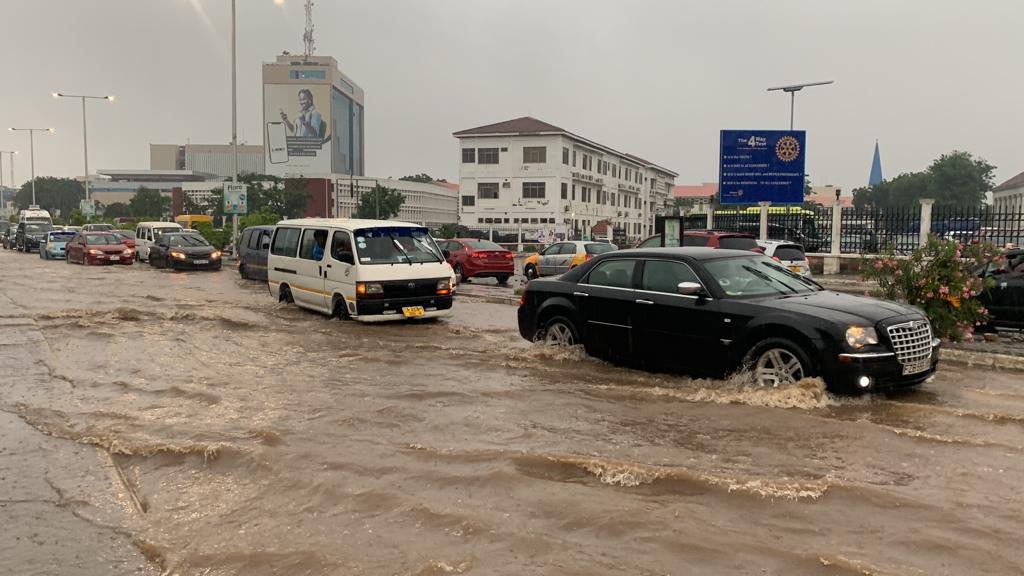Flash floods a growing threat in urban areas due to population increase
 Mr Eric Essuman, the Acting Director-General of Ghana Meteorological Agency (GMet), says flash floods are a growing threat in urban areas due to population increase, migration, and climate change.
Mr Eric Essuman, the Acting Director-General of Ghana Meteorological Agency (GMet), says flash floods are a growing threat in urban areas due to population increase, migration, and climate change.
He said flash floods were sudden local floods of great volume and short duration occurring within six hours or less of heavy or excessive rainfall.
The Acting Director-General said flash floods, rapid and intense floods caused by heavy rainfall, were a recurring threat during Ghana’s rainy season, disrupting vital sectors like energy, disaster management, health, agriculture, and water resources.
“Predicting rainfall amounts and impacted areas is crucial for safeguarding our nation and fostering economic prosperity, hence the need for developing an Urban Flash Flood Forecasting System (UFFFS),” he added.
Mr Essuman was speaking at the opening ceremony of a 3-day Regional Technical Capacity Building Workshop on the UFFFS held in Accra.
This workshop is a collaboration between GMet, the World Meteorological Organisation (WMO), the Volta Basin Authority (VBA), the Global Water Partnership in West Africa (GWP-WA), and HKV.
GMet, together with its partners, under the “Integrating Flood and Drought Management and Early Warning for Climate Change Adaptation in the Volta Basin (VEM) project,” aim to build capacity for this crucial forecasting system.
Mr Essuman said the Agency collaborated with the Ghana Hydrological Authority (HYDRO), AGRHYMET, WMO, ACMAD, River Basin Organisations, International Climate Centers, and users to develop seasonal forecasts.
“Accurate and timely seasonal forecasts are critical for planning and mitigating risks associated with fluctuations in monsoon activity,” he added.
He said the Volta Basin was a vital natural resource for nations and the sub-region, supporting livelihoods across various sectors crucial for socio-economic development.
The Acting Director-General said recognising its immense value, it was imperative to collectively invest in its sustainable management and preservation.
He said the recent Akosombo dam spillage served as a stark reminder of the impact of monsoon variability, highlighting the importance of preparedness and effective response to monsoon-related phenomena.
Mr Essuman said effective communication and validating forecasts at all timescales were essential for managing climate hazards, stating that the Agency was introducing the Common Alerting Protocol (CAP) to enhance the understanding and enable timely responses for a robust early warning system.
“This year, we are committed to strengthening our alert distribution systems, refining communication strategies, and ensuring warnings reach those most in need, empowering informed decision-making,” he added.
Mr Ramesh Tripathi, Volta Flood and Drought Project Manager, WMO, said this timely training focused on UFFFS, a system that utilised data from satellites, weather radar, and other sources to forecast flash floods in urban areas.
He said the training also directly contributed to the national Early Warnings for initiatives aiming to save lives and property.
The Project Manager said it was crucial that floods and droughts were timely monitored, adding that it was also important for national agencies who had the mandate to see what kind of impact it could create.
Source: GNA
